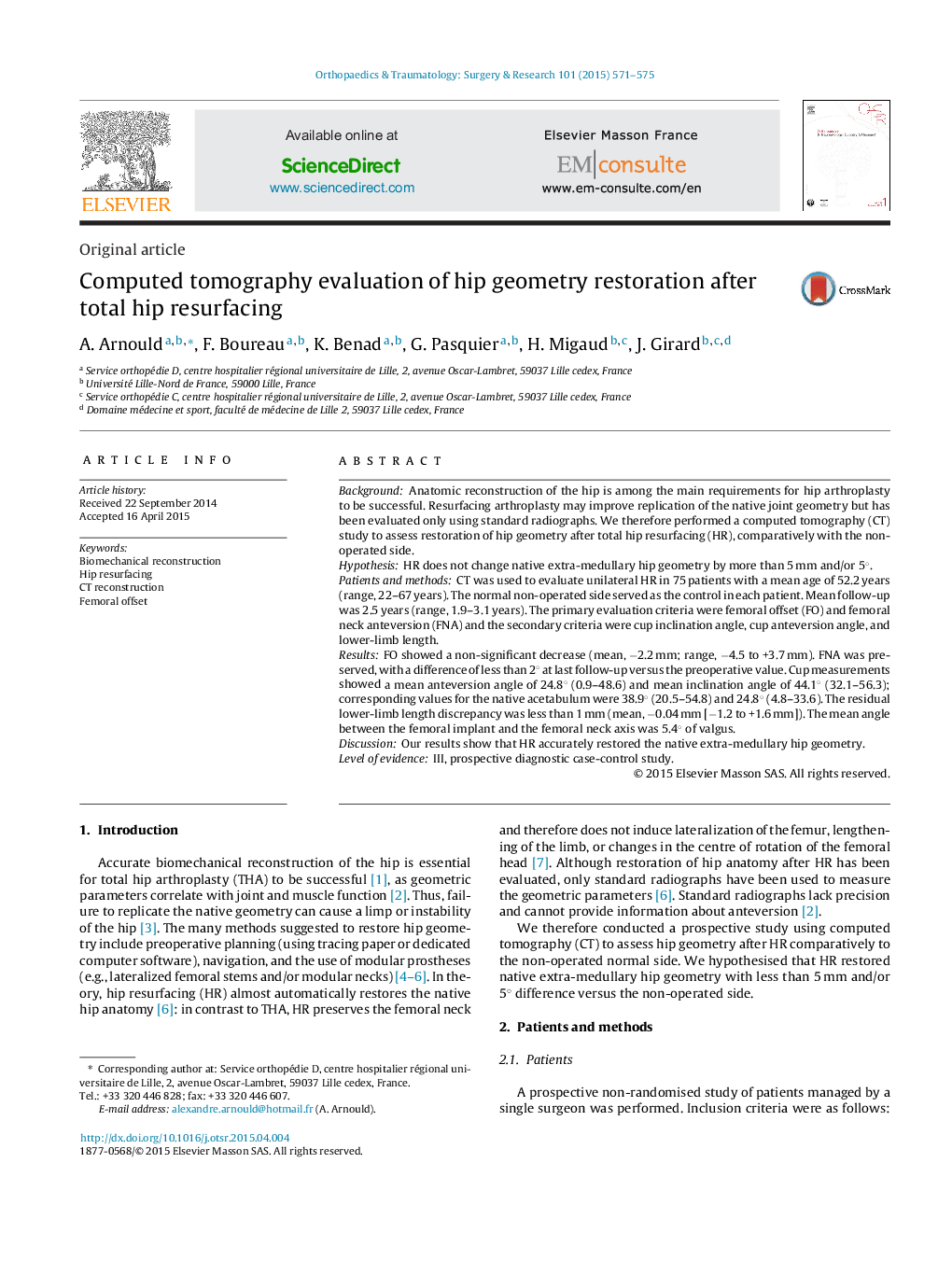| Article ID | Journal | Published Year | Pages | File Type |
|---|---|---|---|---|
| 4081047 | Orthopaedics & Traumatology: Surgery & Research | 2015 | 5 Pages |
BackgroundAnatomic reconstruction of the hip is among the main requirements for hip arthroplasty to be successful. Resurfacing arthroplasty may improve replication of the native joint geometry but has been evaluated only using standard radiographs. We therefore performed a computed tomography (CT) study to assess restoration of hip geometry after total hip resurfacing (HR), comparatively with the non-operated side.HypothesisHR does not change native extra-medullary hip geometry by more than 5 mm and/or 5°.Patients and methodsCT was used to evaluate unilateral HR in 75 patients with a mean age of 52.2 years (range, 22–67 years). The normal non-operated side served as the control in each patient. Mean follow-up was 2.5 years (range, 1.9–3.1 years). The primary evaluation criteria were femoral offset (FO) and femoral neck anteversion (FNA) and the secondary criteria were cup inclination angle, cup anteversion angle, and lower-limb length.ResultsFO showed a non-significant decrease (mean, −2.2 mm; range, −4.5 to +3.7 mm). FNA was preserved, with a difference of less than 2° at last follow-up versus the preoperative value. Cup measurements showed a mean anteversion angle of 24.8° (0.9–48.6) and mean inclination angle of 44.1° (32.1–56.3); corresponding values for the native acetabulum were 38.9° (20.5–54.8) and 24.8° (4.8–33.6). The residual lower-limb length discrepancy was less than 1 mm (mean, −0.04 mm [−1.2 to +1.6 mm]). The mean angle between the femoral implant and the femoral neck axis was 5.4° of valgus.DiscussionOur results show that HR accurately restored the native extra-medullary hip geometry.Level of evidenceIII, prospective diagnostic case-control study.
